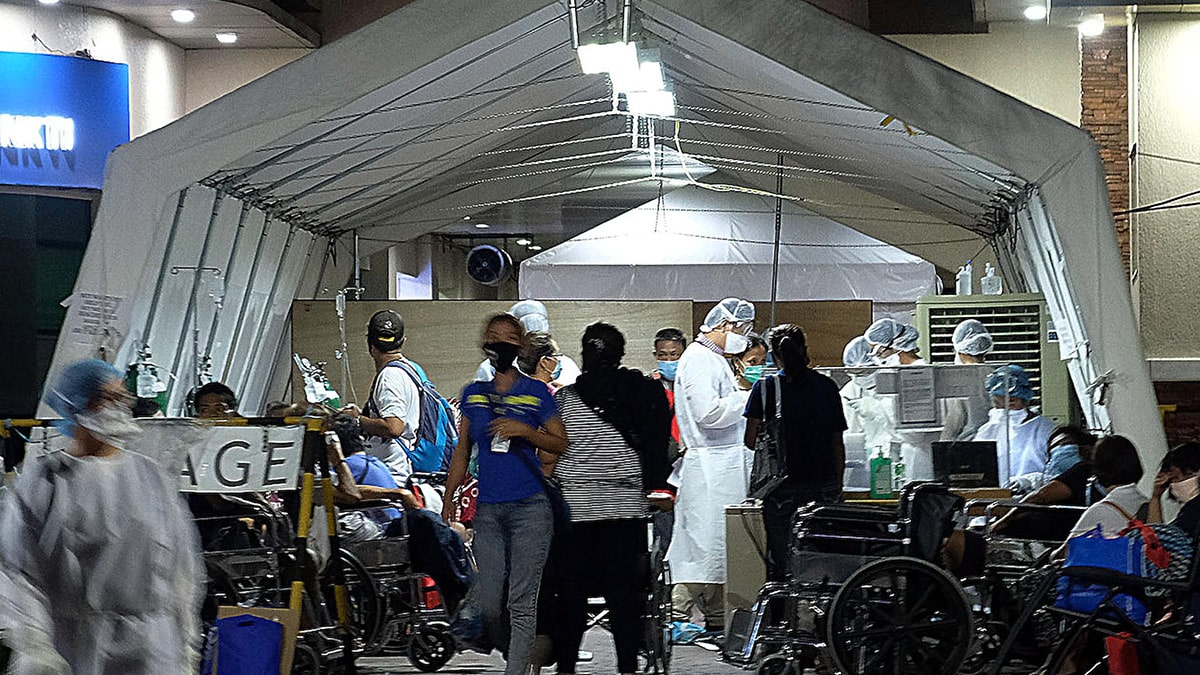
WORKING WITHOUT INTERFERENCE Health professionals, both doctors and nondoctors, work together at the height of the COVID-19 pandemic in 2020. —Grig C. Montegrande
MANILA, Philippines — Health workers demanded that the Department of Health (DOH) correct the biased distribution of professional fees paid by the Philippine Health Insurance Corp. (PhilHealth) for government health professionals.
The Alliance of Health Workers (AHW) said it sought a dialogue with Health Secretary Teodoro Herbosa over the “pooled professional fees” that PhilHealth pays equal distribution among doctors and nondoctor health professionals, including nurses, medical technologists and pharmacists, among others.
However, the health secretary was not able to meet with the health workers on Nov. 15 because the request was purportedly “for review” by Herbosa’s office.
In his letter to Herbosa, AHW president Bonifacio Carmona Jr. objected to the questionable distribution of the pooled funds, particularly under DOH Administrative Order (AO) No. 2016-033.
“We oppose this provision because it has caused confusion and division among doctors and nonphysician health workers. It undermines the essence of giving due recognition to both doctors and health workers who collectively work together to provide full service for quality patient care,” Carmona said.
READ: Probe into missing P7.3 million COVID benefits for front-liners sought
Required by law
Under Section 35 of Republic Act No. 7875, or the National Health Insurance Act of 1995 that created PhilHealth, “fees paid for professional services rendered by salaried public providers shall be allowed to be retained by the health facility in which services are rendered and be pooled and distributed among health personnel.”
PhilHealth currently pays health-care facilities under the All Case Rates system, where the state health insurer reimburses accredited hospitals at a predetermined fixed rate for each treated case.
Seventy percent of a case rate is the health-care institution fee, while the remaining 30 percent is the professional fee.
A total of 7,099 government health-care institutions (785 hospitals and 6,314 other facilities) are accredited by the PhilHealth.
But in June 2016, then Health Secretary Janette Garin, in DOH AO 2016-033, instructed government hospitals to distribute half of the pooled professional fees to physicians, while the other half was shared among the nondoctor professionals.
For instance, if a government hospital, which has 20 physicians and 80 nondoctor personnel, collects P1 million in professional fees, it will be inequitably distributed as follows:
Each of the 20 doctors would receive P25,000, while each of the 80 nondoctors would only get P6,250.
Leaving well enough alone
Prior to the issuance of Garin’s AO, the distribution of the professional fees were left to the discretion of the hospitals, resulting in “a largely heterogeneous sharing scheme of the [professional fees] reimbursed by PhilHealth throughout government hospitals.”
Under the AO, all doctors and nonphysician health workers who are full-time, part-time, permanent, temporary, casual, contractual or from the medical pool would be entitled to a share from the pooled funds.
Part-time health workers of a health-care facility, however, would only get half the share of a full-time staff, in compliance with civil service laws.
Personnel who are meted disciplinary measures (such as suspensions or fine), those who are on leave without pay and those detailed in other offices and institutions are not entitled to a share from the pooled funds.